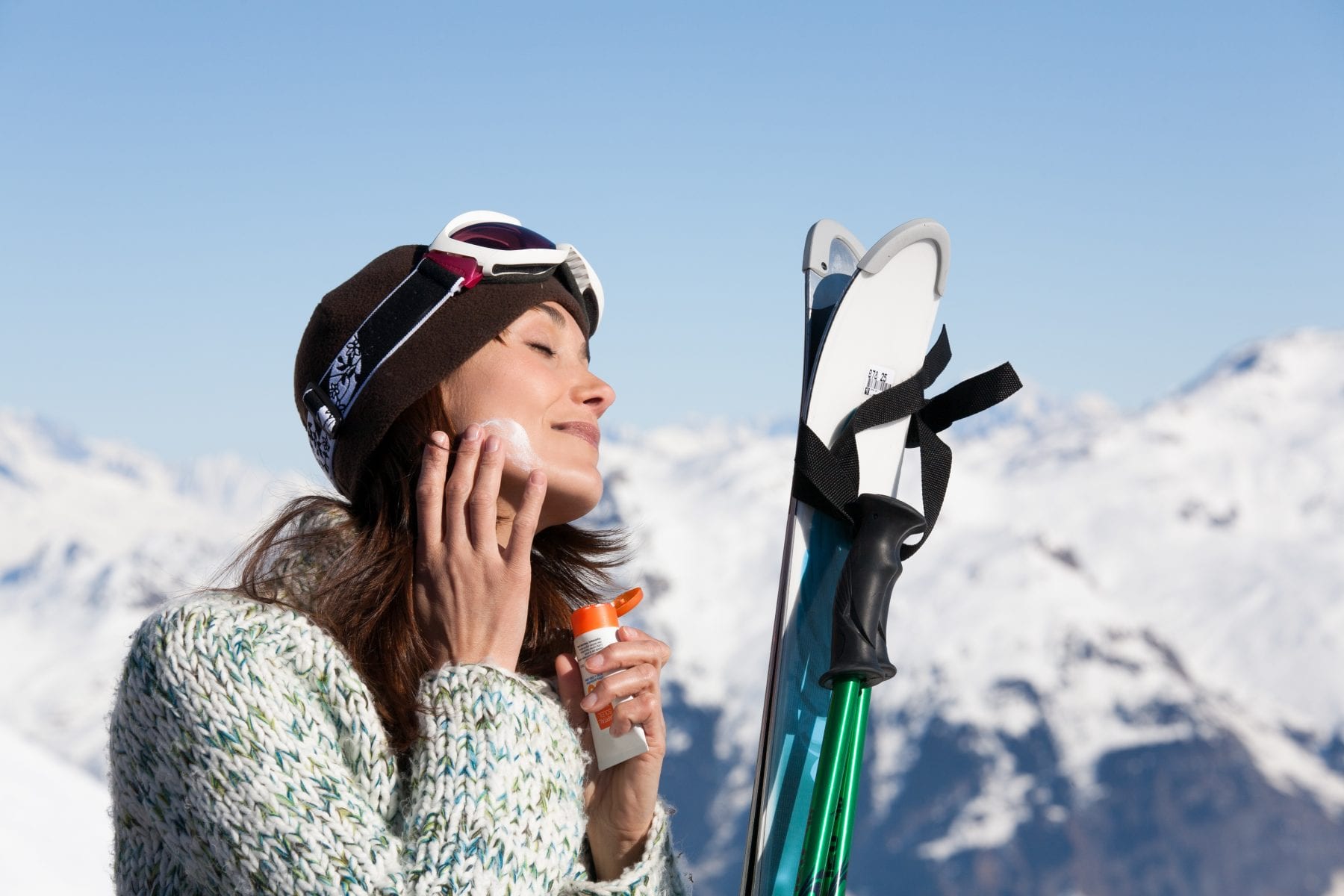
“Sunscreen in the winter?”—a question better suited for those who think about the warm, sunny days of summer with nostalgia. For the rest of us, it’s quite the oxymoron. After all, what does sunscreen have to do with the chilly days of winter, when the sun’s rays are devoid of their summery heat?
Unfortunately, the prevalence of skin cancers amongst Americans is only becoming greater. About 9,500 people in the U.S. are diagnosed every day with skin cancer, and nonmelanoma skin cancer (NMSC) affects more than three million Americans every year.
Blame it on global warming or the ozone layer depletion, but one thing’s for sure—warmer and warmer days increasingly bombard our skin with harmful UVA and UVB rays. And don’t think that sunscreen is only a summertime necessity—many physicians advise us to protect our skin in the winter as well, when the sun’s rays, although less potent, can cause significant skin damage.
Using sunscreen should not depend on temperature or season. On the contrary, including sunscreen in your daily skincare regimen is more than desirable. Curious about how to protect your skin during the cold season? Today, the Top Doctor Magazine is ready to share all the hints and tips you need for an all-season skin protection regimen.
How Sunlight Affects Your Skin
The sun’s natural energy reaches earth accompanied by UV radiation, whose shorter wavelengths make it undetectable by the naked eye. Nevertheless, we feel it, especially on a lazy summer day at the beach. The key components of UV radiation are the UVA and UVB rays.
What Are UVA Rays?
Ultraviolet A rays constitute 95% of the total UV radiation reaching the Earth’s surface. These rays penetrate the skin much deeper than UVB rays, causing dark spots, wrinkles, and skin cancers. At the beach, they’re responsible for your much-craved tan. However, they’re also more potent, since UVA rays penetrate clouds, glass, and even clothes and are present throughout the year, including winter time.
What about UVB Rays?
The shortwave UVB rays are not as potent as their counterparts, nor do they penetrate the deep skin levels or other surfaces. At the beach, they cause the much-dreaded sunburn. During winter, snow reflects about 80% of the sun’s rays, hitting you with a higher dose of radiation.
No matter how bundled up you are, UV radiation can still reach your skin even in the winter. However, isn’t the ozone layer, our planet’s exterior line of defense, supposed to absorb the majority of these UV rays? Indeed, it is—unfortunately, the ozone layer is actually at its thinnest in wintertime, lowering the shield against UV radiation. So, counterintuitively, now is the time for an even stronger skin protection regimen!
Sunscreen, Your Most Trusted Winter Ally
Are you hitting the slopes this winter or are you snowed under with too much office work? Regardless of where you are, every 1,000 feet above sea level bump up the UV radiation exposure percentage by 4-5%. Research points out that people spending more time near windows showed more pronounced aging signs, such as wrinkles and Crow’s feet. It also shows that snow and ice reflect up to 90% of UV rays.
UV radiation is the biggest culprit behind premature skin aging. Its rays damage your skin’s collagen and elastin, which are the proteins responsible for your skin’s smoothness and elasticity. Without these proteins, the skin gradually becomes saggy, allowing for fine lines and wrinkles to appear.
Luckily, researchers who study premature skin aging have a simple and easily accessible remedy to this undesirable process—sunscreen! One particular study found out that daily sunscreen use, especially in countries blessed with copious sunshine, such as Australia, lowers the skin aging percent by almost a quarter. The study was conducted on the middle-aged population, so it’s clear that implementing a skin protection regimen is always welcome. However, are all sunscreen lotions identical? How about the sun protection factor (SPF)? What product should I settle upon?
Hit the SPF 30 Mark
If you’re already envisioning yourself lost between too many sunscreen options at the store, hesitate no further—proper skin protection only requires a product that boasts SPF 30 or higher, according to the American Academy of Dermatology Association. The secret lies not only in the SPF but also in the frequency with which you apply the sunscreen! Wintry winds and snow cause sunscreen to wear off faster, thus calling for multiple sunscreen applications throughout the day. The Skin Cancer Foundation advises us to apply sunscreen every two hours in winter, especially after sweating.
The use of sunscreen is not synonymous with slathering your skin with lotion. Such an approach will cause you to look over often-missed spots, such as the ear tips, the skin around the eyes, and the forehead area adjacent to the hairline. Instead, apply sunscreen carefully, without a rush, to avoid any accidents. You can improve your skin protection regimen by throwing in a moisturizer with lanolin or glycerin, which are compounds that keep your skin hydrated even during the harshest of winters!
A Parting Reminder
No matter how cloudy, grey, or overcast it is, the sky will always welcome the sun’s rays and, unfortunately, its UV radiation. Since nature has a hard time keeping UVA and UVB rays away from your skin, it’s time for you to build up your defenses, even in the winter, and sunscreen is here to be your trusted shield and armor. Don’t forget to check out the Top Doctor Magazine website for more helpful articles on lifestyle and self-care!





0 Comments